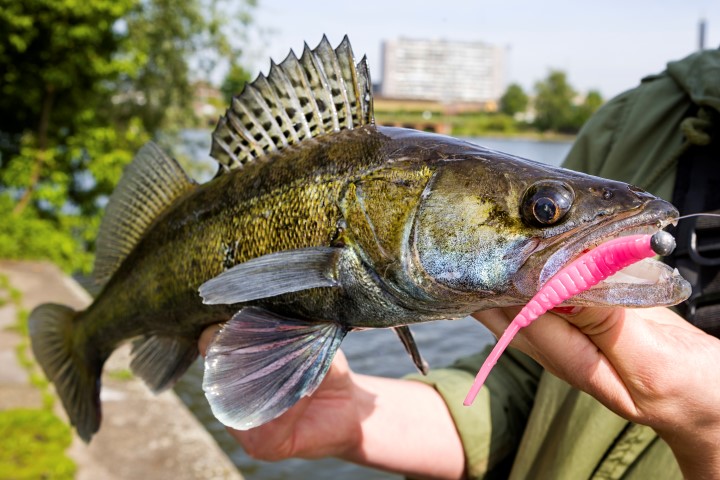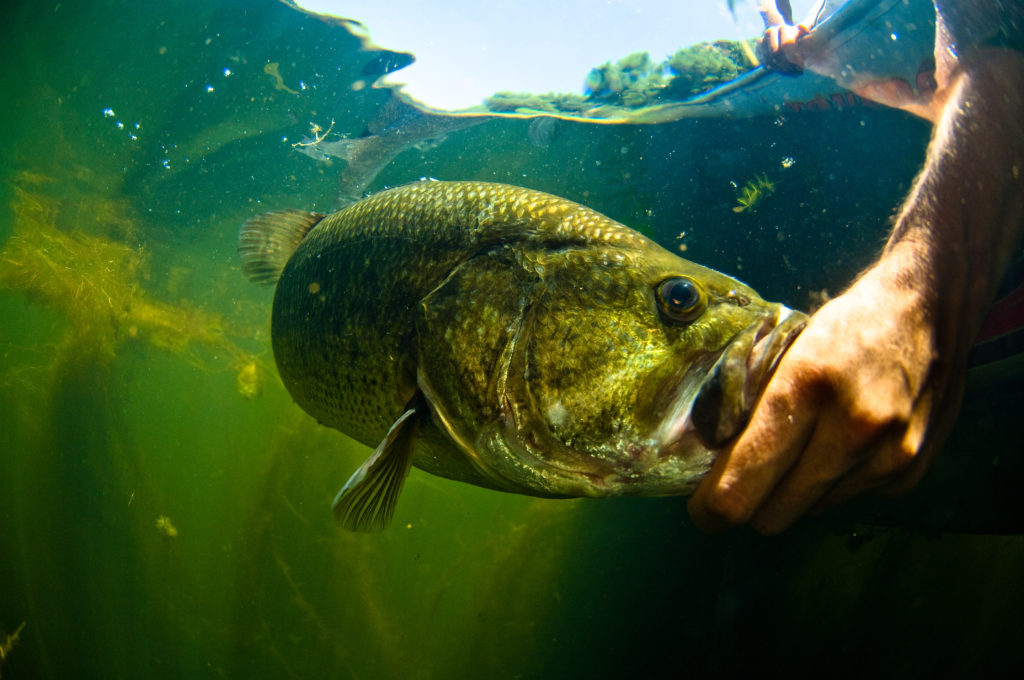
The pike-perch is undoubtedly one of the most difficult predators for lure fishermen to identify. Fantastic and at the same time mysterious, pike-perch fishing becomes a real drug for fans of this fish with its characteristic touch. This so specific "knock" that you feel at the end of your rod and that so many fishermen are looking for.
Zander is an enigma in the fishing world. This is why we wanted to dedicate an article to it. Perhaps it will be able to help fishermen, enthusiasts or amateurs, to better understand this carnivore emblematic of our French waters.
Zander fishing: knowing the fish above all
Introduced on our territory in the 20th century, the pike perch has today become an emblematic fish of our French waters. Zander generally evolves in calm and deep parts of our rivers such as ponds, dam lakes or slow-flowing rivers. It finds in these places an ideal habitat where it lives and hunts in schools, at least up to a certain size. It is particularly fond of open water with hard bottoms, without mud or vegetation, as well as banks with obstacles.
The pike perch is a lucifuge fish, that is to say which flees the light. Its activity is mainly twilight and nocturnal. The peak of zander activity is generally between 6 p.m. and midnight. Sedentary in nature, the pike perch is however able to cover great distances depending on the water temperature, particularly in females.
Although some people prefer pike perch fishing in winter, it should be noted that its activity is maximum in summer, corresponding to the growth period of the species.

With this brief description in mind, it is now necessary to define the techniques that one wishes to implement, whether by boat or on board.
Zander fishing: the choice of techniques
The pike perch is mainly fished with soft lures in linear or vertical, even if it can be aimed in some cases with hard lures such as crankbaits or jerkbaits. At certain points in the fishery, these will even take precedence over the best soft lures.
What is certain in pike-perch fishing is that it can bewilder you. Indeed, the pike perch adopts so many different behaviors over the course of a season that it is up to the fisherman to adapt himself and his fishing equipment.
If the water is very turbid and you are fishing near the edges, linear fishing is often a good solution, especially in winter.
If you are in a boat and fishing in deeper parts of the stream, you can go vertical with two approaches.
A quick approach with shad type lures
The goal here is to cover as much water as possible and to trigger reflex hits in active fish. Favor regular, clean and unencumbered funds to avoid any snags. In this case, the large plateaus can turn out to be very good spots for pike-perch fishing with this type of technique.
A very slow approach with finesse type lures
The aim here is to gently move the lure about fifteen centimeters from the bottom with a almost zero animation. It is therefore better to be sure of your position for this type of technique because this fishing can quickly be discouraging. Once on the right spot, you will be surprised by the violence of the attacks on a lure which is however hardly animated!
Zander fishing: the details that make the difference
The pike perch is a color sensitive fish. Choosing the right lure but above all the right color according to the environment and the season is therefore a crucial element to take into account. In turbid waters, start with use in priority fairly visible models, even flashy: fire tiger, fluo, chartreuse, ... Depending on the reactions obtained and the clarity of the water, switch to more neutral and natural colors: Ghost blue, Ayu, Dark brown,…
Apart from the colors, don't forget to also use soft lures with attractant. The pike perch has a habit of keeping the lure in its mouth, but spits it out immediately if in doubt. Attractant will keep your lure a little longer in its mouth and thus ensure better hooking of the fish.

When fishing for pike perch, don't forget to add a fluorocarbon leader. In the case of light and small lures (8 to 10 cm and less than 10gr), a leader of a maximum of 20/100 is strongly recommended. For fishing with slightly heavier lures, choose a leader in 22/100 4 meters long. This will reduce the detection capacity of this percid, which is more sensitive than other predators.
Do not forget to take with you versatile rods, which can be adapted to vertical fishing as well as linear. The all-purpose rod does not exist so do not hesitate to take several as far as possible in order to avoid missing out on the fishing of the moment.
As you will have understood, pike-perch fishing, above all, can be anticipated!
Zander fishing: vary the animation of your lures
According to the changing mood of this fish, do not hesitate to vary the animation of your lures. Start with animations made of small twitches that make it easier to touch active fish, to move to slower animations in case of refusal.
Do not hesitate to change the weight of the jig heads of your lures. Indeed, the descent speed of your lure is one of the most important factors in pike-perch fishing. The type of evolution of the lure, depending on whether it is fluid or jerky, will also be of considerable importance. Do not neglect this factor by playing on the different animations of your lures to detect the current pattern.
Pike-perch fishing in flood: a moment not to miss

Everyone knows that periods of high water are times not to be missed for pike-perch fishing which then experiences sometimes phenomenal peaks in activity.
During the flood, the fish are most often attached to vibrating lures. So use lures with strong vibrations and equipped with jig heads type Foot Head. These jig heads indeed allow more vibration and more lure rolling than other jig heads.
The color of the lure is again decisive when looking for pike-perch during flooding. Here are some ideas to help you choose the color according to the flood period.
The beginning of the flood
The water begins to color and the level rises more or less quickly. The beginning of this phase corresponds to a period of important activity for pike-perch. During the onset of the flood, choose natural colors (ghost brown, ayu, even white) if the color of the water is not yet strongly tinted. The fish are not necessarily very big but the hits are violent and numerous.
The peak of the flood
This is the most intense moment of the flood. The water is very loaded and the fish have left the bed of the river to colonize the dampers and other places which offer them areas of retreat but also of hunting. In this case, fluorescent colors often make the difference: yellow, pink, chartreuse, firetiger, ... Fishing conditions are generally difficult and there are not too many hits. On the other hand, this is the time when you have the most chance of stumbling upon a trophy fish.

The decline
Difficult to put a color forward during the decline. As the river gradually clears up, natural-colored lures will gradually take precedence over fluorescent lures. However, the whimsical and changeable behavior of the pike-perch can also cause it to crack down on neon even with relatively clear water.
There is always one color better than the others. Also, do not hesitate to change the lure regularly in the absence of a hit and also in the case of missed hits. Small tip, if the fish make a little timid touches on a little neutral lures, adding a fluorescent jig head can change everything ...
Pike-perch fishing: Learn alongside a fishing guide

You would have understood it, pike-perch fishing requires thoroughness but above all experience and practice to better understand his behavior. Even with this knowledge, it is sometimes very complicated to know why pike-perch start aiming at a lure or even a vibration type in relation to another ...
Whether in casting or in spinning, at jerkbait or in vertical, using a zander fishing guide can therefore prove to be a good solution not to waste time for learn fishing with pike perch. Their expertise will help you broaden your horizons and increase the quality as well as the quantity of the keys.
For those for whom the pike perch fishing still remains a mystery, our fishing guides will share with you their techniques to understand this fabulous percussion that populates our waters.




